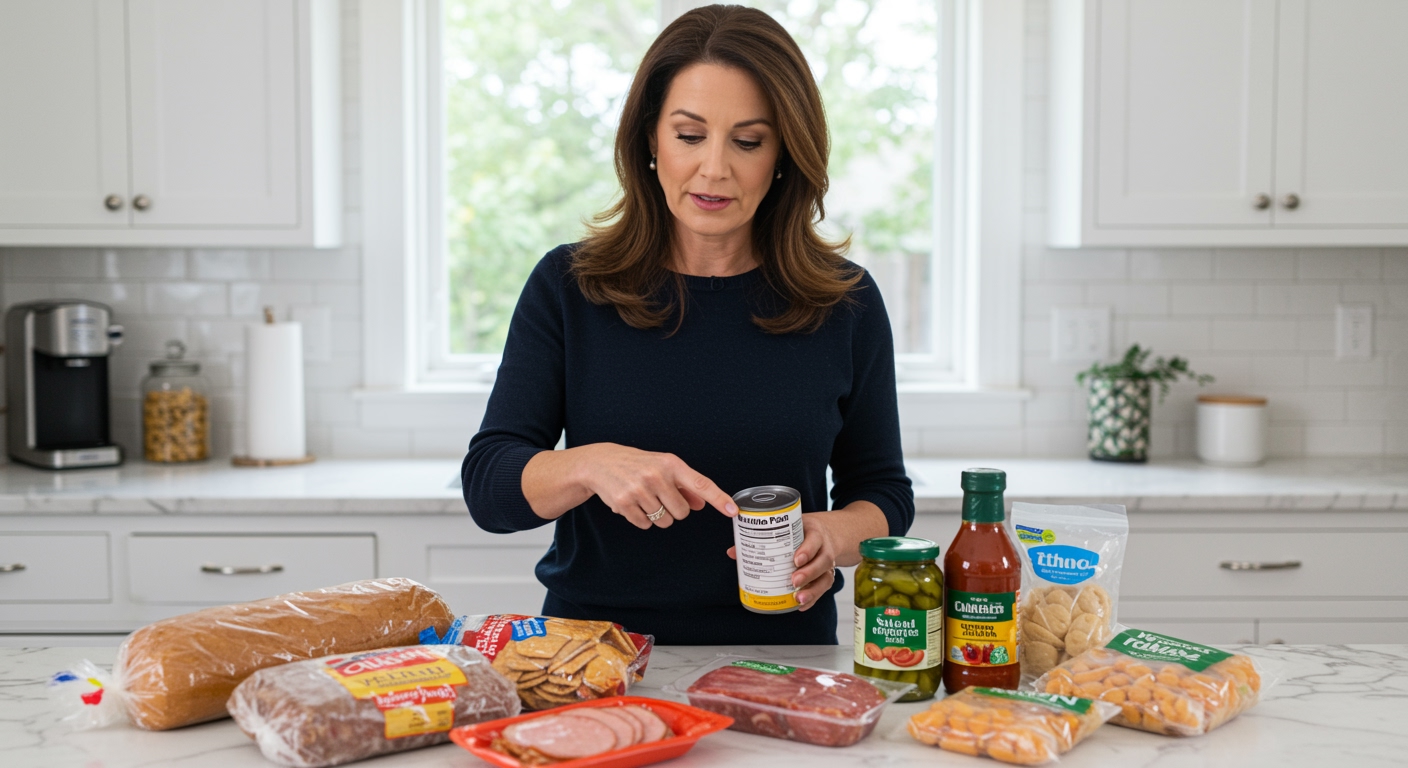✪ Key Takeaway: People with high blood pressure must check food labels because hidden sodium can raise blood pressure dangerously.
Introduction
Your blood pressure monitor shows those scary numbers again.
You might be wondering if those tiny numbers on food packages really matter when your health is on the line.
Hi, I’m Abdur, your nutrition coach and today I’m going to explain why checking food labels is absolutely critical for managing high blood pressure effectively.
Why Do Food Labels Matter for Blood Pressure?
Food labels reveal the hidden sodium that lurks in everyday products.
Most people consume over 3,400 milligrams of sodium daily without realizing it.
The American Heart Association recommends no more than 2,300 milligrams per day for most adults.
People with high blood pressure should aim for 1,500 milligrams or less daily.
Sodium makes your body hold onto extra water, which increases the volume of blood flowing through your arteries.
This extra fluid puts more pressure on your artery walls, causing your blood pressure to rise.
Without checking labels, you cannot control your sodium intake effectively.
✪ Fact: Just one can of soup can contain your entire daily sodium allowance for high blood pressure management.
What Should You Look for on Food Labels?
The nutrition facts panel contains the most important information for blood pressure management.
Look for the sodium content listed in milligrams per serving.
Pay attention to the serving size because many packages contain multiple servings.
Check the ingredient list for sodium-containing compounds like monosodium glutamate, sodium bicarbonate, and sodium citrate.
The percent daily value helps you understand how much sodium one serving contributes to your daily limit.
Foods with 5% daily value or less are considered low sodium.
Products with 20% daily value or more are high in sodium and should be avoided or limited.
✪ Pro Tip: Multiply the sodium per serving by the number of servings you actually eat to get your true sodium intake.
Which Foods Contain Hidden Sodium?
Processed and packaged foods are the biggest sources of hidden sodium in our diet.
Bread and rolls contribute more sodium to the average American diet than potato chips.
Canned soups often contain 800 to 1,200 milligrams of sodium per serving.
Deli meats and processed meats are loaded with sodium for preservation purposes.
Frozen meals can contain over 1,000 milligrams of sodium in a single serving.
Condiments like soy sauce, ketchup, and salad dressings add significant amounts of sodium to meals.
Even seemingly healthy foods like cottage cheese and vegetable juice can be high in sodium.
✪ Note: Restaurant meals typically contain two to three times more sodium than homemade versions of the same dishes.
How Can Label Reading Change Your Health?
Reading labels consistently can lower your blood pressure within weeks.
Studies show that reducing sodium intake by 1,000 milligrams daily can decrease systolic blood pressure by 2 to 8 mmHg.
This reduction is similar to the effect of some blood pressure medications.
Label reading helps you make informed choices between similar products.
You can choose the lower sodium option when comparing brands of the same food.
Over time, your taste buds will adapt to less salty foods, making the transition easier.
Many people find their blood pressure improves enough to reduce medication doses under medical supervision.
✪ Fact: People who read food labels regularly consume 6% less sodium than those who never check labels.
What Are the Best Label Reading Strategies?
Start by checking the sodium content before you check anything else on the label.
Compare similar products side by side to find the lowest sodium option.
Look for products labeled “no salt added,” “reduced sodium,” or “low sodium.”
Be aware that “reduced sodium” still might contain high amounts of sodium compared to fresh alternatives.
Calculate your daily sodium intake by adding up the milligrams from all foods you eat.
Keep a food diary for a few days to understand your current sodium consumption patterns.
Focus on buying more fresh, whole foods that do not require nutrition labels.
✪ Pro Tip: Shop the perimeter of the grocery store where fresh foods are located to naturally reduce your need for label reading.
The Bottom Line
Checking food labels is not optional for people with high blood pressure – it is essential for protecting your health.
Your blood pressure responds to every milligram of sodium you consume, so every label you read is an investment in your future health.
I would love to hear about your experiences with reading food labels or any questions you have about managing sodium intake in the comments below.
References
At NutritionCrown, we use quality and credible sources to ensure our content is accurate and trustworthy. Below are the sources referenced in creating this article:
- American Medical Association: What doctors wish patients knew about sodium consumption
- American Heart Association: Shaking the Salt Habit to Lower High Blood Pressure
- American Heart Association: How much sodium should I eat per day
- ESC CardioMed: Salt and hypertension: current views





